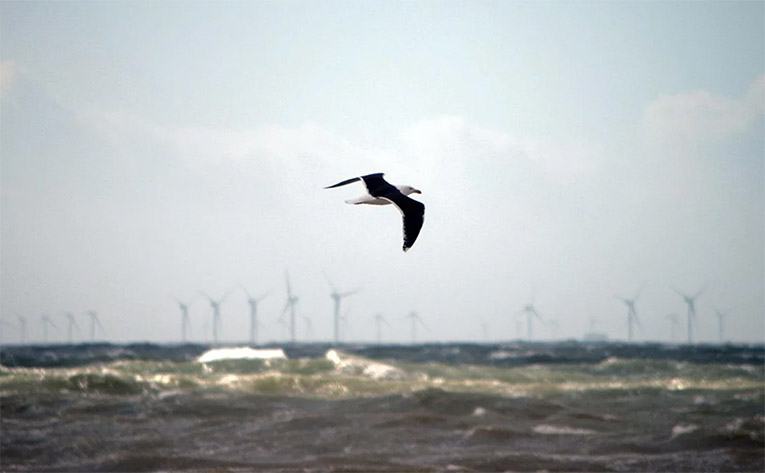DOE, the Department of Energy, announced this Wednesday it is releasing a $13 million investment for some projects that will assess risks and offer protection to wildlife surrounding potential areas for offshore wind development.
Firstly, the $13,5 million funding would provide critical environmental and wildlife data. Such data would support offshore wind on both coasts of the U.S. It will also be an interagency effort that will further pave the way for president Biden’s pledge to develop 30 gigawatts of offshore wind by 2030.
Consequently, the funding by DOE supports directly and aligns with President Biden’s plan to catalyze offshore wind energy; strengthen the domestic supply chain, and create good-paying, union jobs.
On the other hand, cleaner electricity goes into the grid as the offshore wind industry launches in the U.S. However, the assets themselves can sometimes pose risks for wildlife surrounding the areas. Birds, bats, other winged creatures, and also fish and marine mammals are often impacted by energy developments.
As a result, DOE selected several projects to assess and improve the impacts offshore wind developments might have on the environment and wildlife. Two of the selected projects will support wildlife and also fisheries monitoring efforts on the East Coast; while the other two will focus on preparing the West Coast for floating offshore wind development by collecting wildlife distribution data; developing tools to monitor the environmental effects of floating offshore wind energy.
Moreover, Secretary of Energy Jennifer M. Granholm, said about the funding. “Harnessing the incredible potential that exists within offshore wind energy is an essential piece of reaching a net-zero carbon future.”
Also recommended for you: RETI partners with Shell Canada for the Polaris CCUS project. Click here to read.
DOE to support impact reduction for wildlife and the environment surrounding offshore wind
She also remarked. “In order for Americans living in coastal areas to see the benefits of offshore wind, we must ensure that it’s done with care for the surrounding ecosystem by co-existing with fisheries and marine life – and that’s exactly what this investment will do.”
In addition, the Department of the Interior’s Principal Deputy Assistant Secretary for Land and Minerals Management Laura Daniel-Davis, said, “We are committed to working with our federal partners to ensure that we have the best available science to inform future decisions to help reduce impacts to marine life and other ocean users.”
On the other hand, the awarded projects are: Duke University, will assess the risk that offshore wind development may pose to birds, bats, and also marine mammals; prioritize wildlife monitoring needs; and also collect biological and behavioral data at offshore wind farms on the East Coast.
Also, the Coonamessett Farm Foundation. It will survey changes in commercial fish and marine invertebrate populations and seafloor habitats at an offshore wind development site on the East Coast.
Furthermore, the Oregon State University will conduct visual surveys and also acoustic monitoring of marine mammals and seabirds. It will develop predictive density maps of species present in potential wind energy development areas on the West Coast.
Finally, the Woods Hole Oceanographic Institution, will develop next‐generation autonomous robotic technology. It will serve for environmental monitoring of marine organisms and the seafloor; at potential wind energy development areas on the West Coast.


